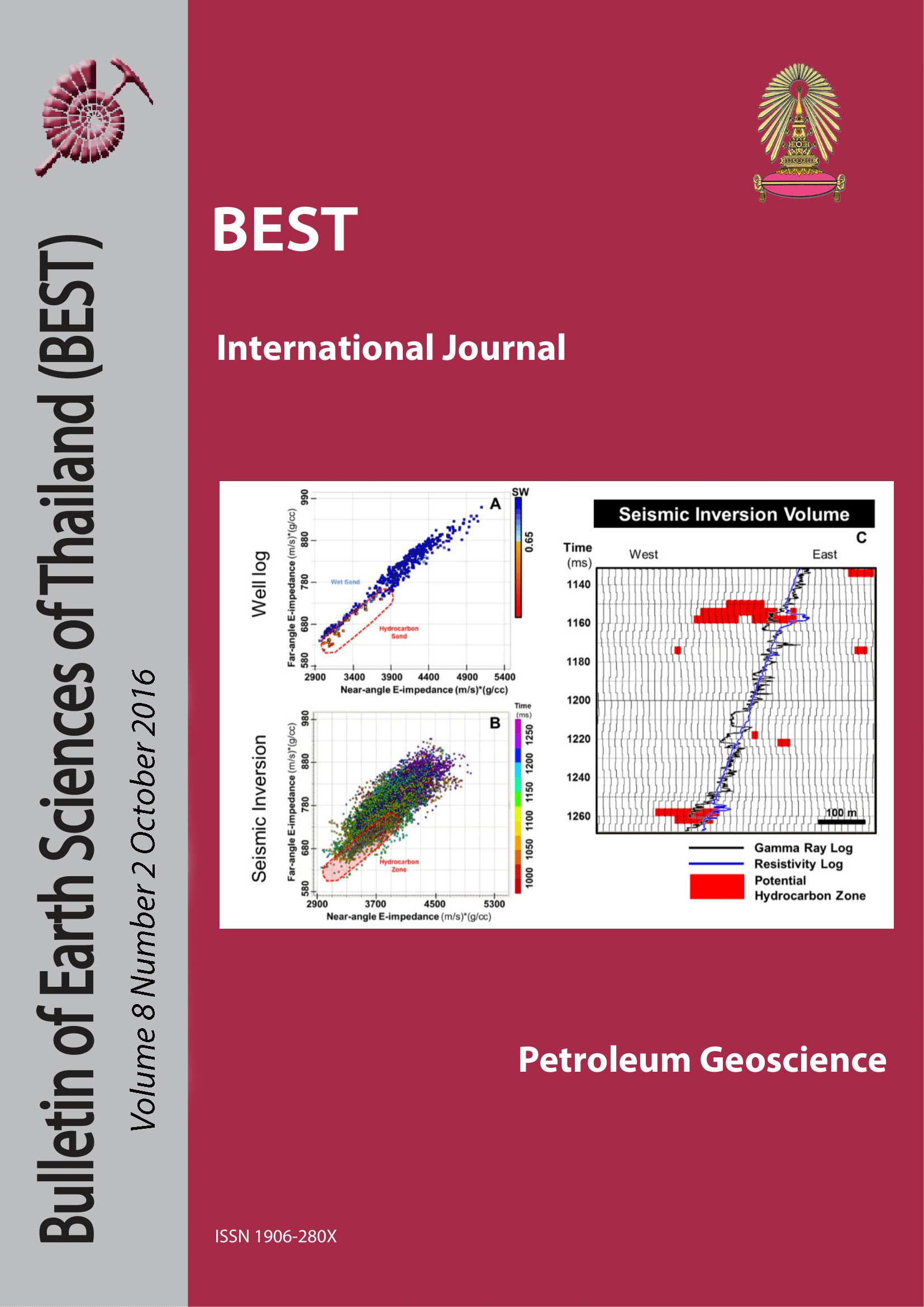RESERVOIR POTENTIAL USING SEISMIC ATTRIBUTES AND DEPOSITIONAL ENVIRONMENT ANALYSIS OF THE EOCENE SUCCESSION SOUTHERN ROVUMA BASIN, MOZAMBIQUE
Main Article Content
Abstract
This study examined depositional environments and sand distribution in the Eocene of the southern Rovuma basin using well data and seismic attributes. The succession was deposited in deep water by a major progradational event that occurred in the Tertiary because of a huge influx of sediments and shelf edge collapse which generated turbidity currents that transported shallow water sediments down slope. Seismic amplitude data cannot fully delineate detailed stratigraphic or structural features, so it is important to consider a number of seismic attributes that can help to easily identify those features. Beyond of many available attributes, RMS, spectral decomposition, variance and coherence were selected due to their proven abilities to delineate stratigraphic, structural discontinuities and bed thickness. Seismic attributes were extracted from a conventional 3D Pre Stack Time-Migration seismic volume. Two main horizon slices were analyzed within the interval. Shallow slice Top Sand RMS and Variance better enhance the sand distribution and the lateral continuity associated with the channels and depositional lobes, whereas the deeper slice Base Sand can be imaged more efficiently by using Spectral Decomposition, Coherence and Variance. Nevertheless, the base of the channel are filled by mud. Channel widths vary from 800 m to 2.2 km. These channels are NW-SE oriented. Depositional environment analysis was carried out on the basis of seismic geomorphology supported by well log data. The study interval was divided into 4 units based on well logs and comprise proximal to distal fans. Potential reservoir targets in this interval might be located where there are high amplitudes on RMS combined with Variance, however, the presence of carbonate cement must be considered. Attributes effectively demonstrate lateral continuity and geomorphology of the channels.
Article Details

This work is licensed under a Creative Commons Attribution-NonCommercial-NoDerivatives 4.0 International License.
Copyright © 2008 Department of Geology, Faculty of Science, Chulalongkorn University. Parts of an article can be photocopied or reproduced without prior written permission from the author(s), but due acknowledgments should be stated or cited accordingly.
References
Chopra, Satinder and Marfurt, K.J (2007). Seismic attributes for prospect identification and Reservoir Characterization, 45 – 71.
Reading, H.G. and M. Richards, 1994, Turbidite systems in deep-water basin margins classified by grain size and feeder system: AAPG Bulletin, v. 78, p. 792-822.
Shanmugam, G. and Moiola, R.J., 1988. Submarine fans: characteristics, models, classification, and reservoir potential. Earth-Sci. Rev., 24: 383-428
Stankiewicz, J., and de Wit, M.J. (2006). A proposed drainage evolution model for Central Africa—Did the Congo flow east? Journal of African Earth Sciences 44, 75–84.


